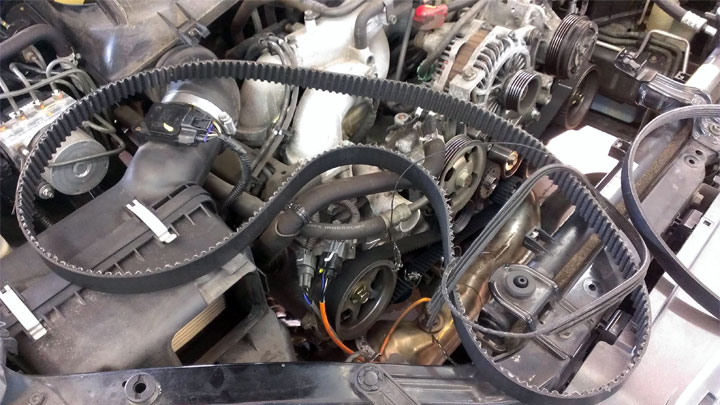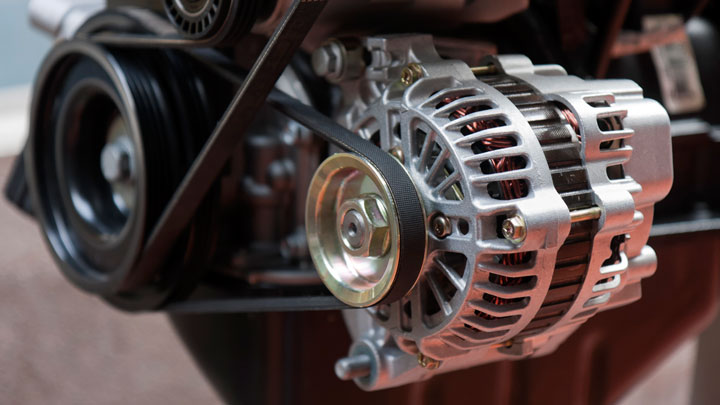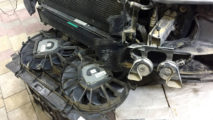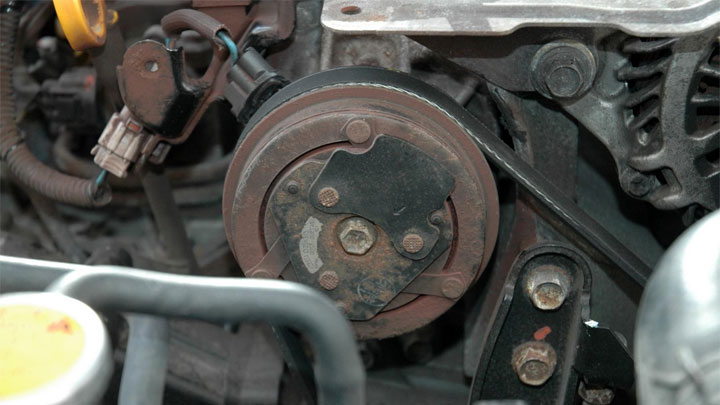Last Updated on January 6, 2021
Your car is made up of several moving parts, such as the alternator, water pump, power steering pump, and AC compressor. For your vehicle to function correctly, these parts all need to work in unison.
The serpentine or accessory drive belt connects to your power steering pump, alternator, air conditioning, and sometimes, the water pump. Powering all these parts, it’s a long belt that ensures that everything runs smoothly.
Because it powers many different components, this belt is can also be referred to as a power steering belt, alternator belt, or fan belt. It should never be confused with a timing belt though.
No matter what it’s called, when it starts to fail, you’ll have some problems. Fortunately, the symptoms of a bad serpentine belt are easy to spot.
See Also: Bad Timing Belt Tensioner Symptoms
How a Serpentine Belt Works
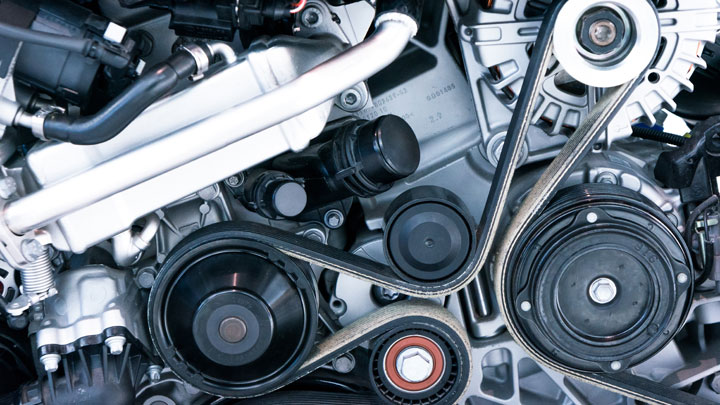
It’s simple mechanics. The belt is hooked up to the various connection points. When the motor kicks into life, the belt is activated. It will be drawn along and tightened. As it does, the belt powers the other components within the system. They move because the belt does.
If you have a bad serpentine belt tensioner, then your air conditioning, power steering, and the alternator will be adversely affected.
Top 5 Bad Serpentine Belt Symptoms
It is a serious issue, and if the belt snaps, you’ll find that the car becomes more challenging to drive. What’s more, if the belt snaps under high tension while in use, it can damage other critical systems, too. It’s best to have this issue repaired as soon as possible.
Here are five ways you’ll know it’s time to replace your serpentine belt:
#1 – Your Air Conditioning is Not Working

If your air conditioner suddenly stops working, this could be the issue. You should notice that the aircon is not functioning and there will be no noise coming from it. There will also not be any cold air escaping from the vents.
Several things could prevent the AC from working but check the accessory drive belt just in case.
#2 – Squealing Sounds

If it sounds as though your car’s practicing for a hog-calling contest, check the serpentine belt immediately. It usually occurs when the belt is slipping or hasn’t been aligned properly and is often most noticeable on cold morning before the engine warms up.
Both situations are simple fixes—tighten the belt and make sure that it lines up perfectly. Other situations would mean buying a new belt instead.
#3 – No Power Steering

A loss of power in the steering mechanism can be a little scary. It’s as though your car becomes impossible to steer overnight. Power steering is great when it’s working, but when something goes wrong, you feel as though you’re driving an unwieldy tank.
While it’s possible to drive without power steering (most older cars didn’t have it), it takes a lot of effort, especially at low speeds. A faulty power steering pump or lack of fluid may actually be the culprits but it’s worth checking your serpentine belt.
#4 – Overheated Engine
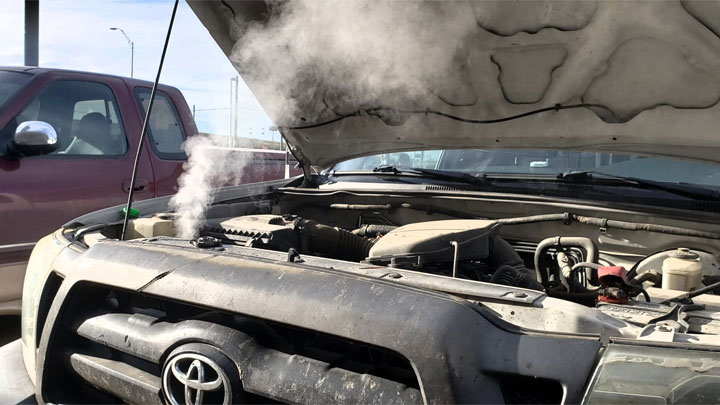
In cars where the belt drives the water pump, this issue is common. If the belt breaks, then the water pump won’t work, and the engine will overheat. If you carry on driving with this problem, you’re looking for trouble.
If you must drive to the mechanic, keep a close eye on the temperature. Drive slowly and carefully to prevent the engine from overheating and seizing. The safest bet is to have the car towed—it costs a bit more, but not as much as a new engine.
#5 – Belt is Cracked
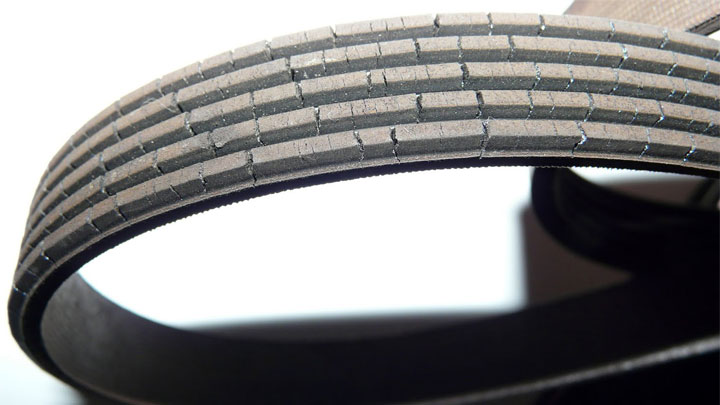
A quick maintenance inspection every few weeks or when you get your oil changed is wise. Check the belts and other components in the car. Do some need to be tightened? Or replaced?
If you see that the serpentine belt is cracked or damaged, it’s time to get a new one. You could wait until the belt snaps, but that’s risking even more damage to your car.
The belt is fairly easy to change in most cases and not that expensive. No excuse warrants putting off this repair.
Serpentine Belt Replacement Cost
Best places to order parts? See: 19 Best Online Auto Parts Stores
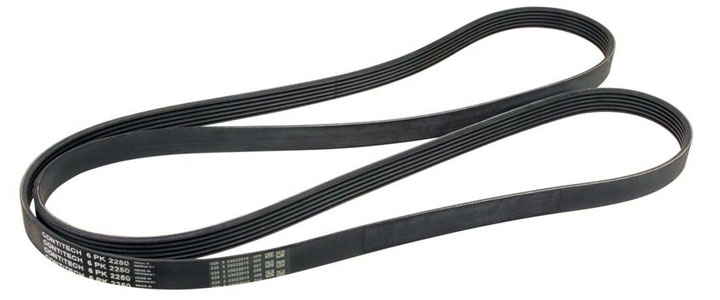
Let’s get down to brass tacks. So exactly how much does a serpentine belt cost?
A typical serpentine belt start at around $25 and goes up to $75 at most. If you know some car repair basics, you could change the belt yourself, and it may save you paying labor charges somewhere between $75 and $120. All together, you’re looking at around $100 to $195 to replace your serpentine belt.
It shouldn’t take more than an hour (two at the most) to repair this simple problem. It depends on the model of the car and how easy it is to get to the serpentine belt within the vehicle’s framework.
Should I Replace the Belt Myself?
There are repairs that you should always leave to the professionals for safety’s sake, but this is not one of those situations. If you have a reasonable grasp of mechanics, YouTube will fill in the gaps for you. If you’re confident that you know what you’re doing, this is an ideal solution. If not, get help.
Considering that it can save you a fair amount of money and that it’s not a complicated task, we’re fine with recommending that average DIYers give it a try for themselves. The chances are that you’ll be pleasantly surprised at what you’re able to accomplish with your drive belt replacement.
See Also: How to Fix a Seat Belt That Won’t Pull Out
Can I Drive My Car With a Bad Serpentine Belt?
It is a question that we hear frequently. There are cases where you might be able to drive your car in an emergency, but we would prefer to adopt a more cautious approach.
If the belt’s snapped, it might be difficult, if not impossible, to steer the car. If the belt’s starting to fray, it won’t be long before it snaps, so it’s better to replace it.
Do the right thing and call your mechanic straight away. The consequences of not doing so could cost you dearly later. What happens if the belt snaps while you’re on the freeway? Our best advice is to stop the car, and have it towed to the shop.

